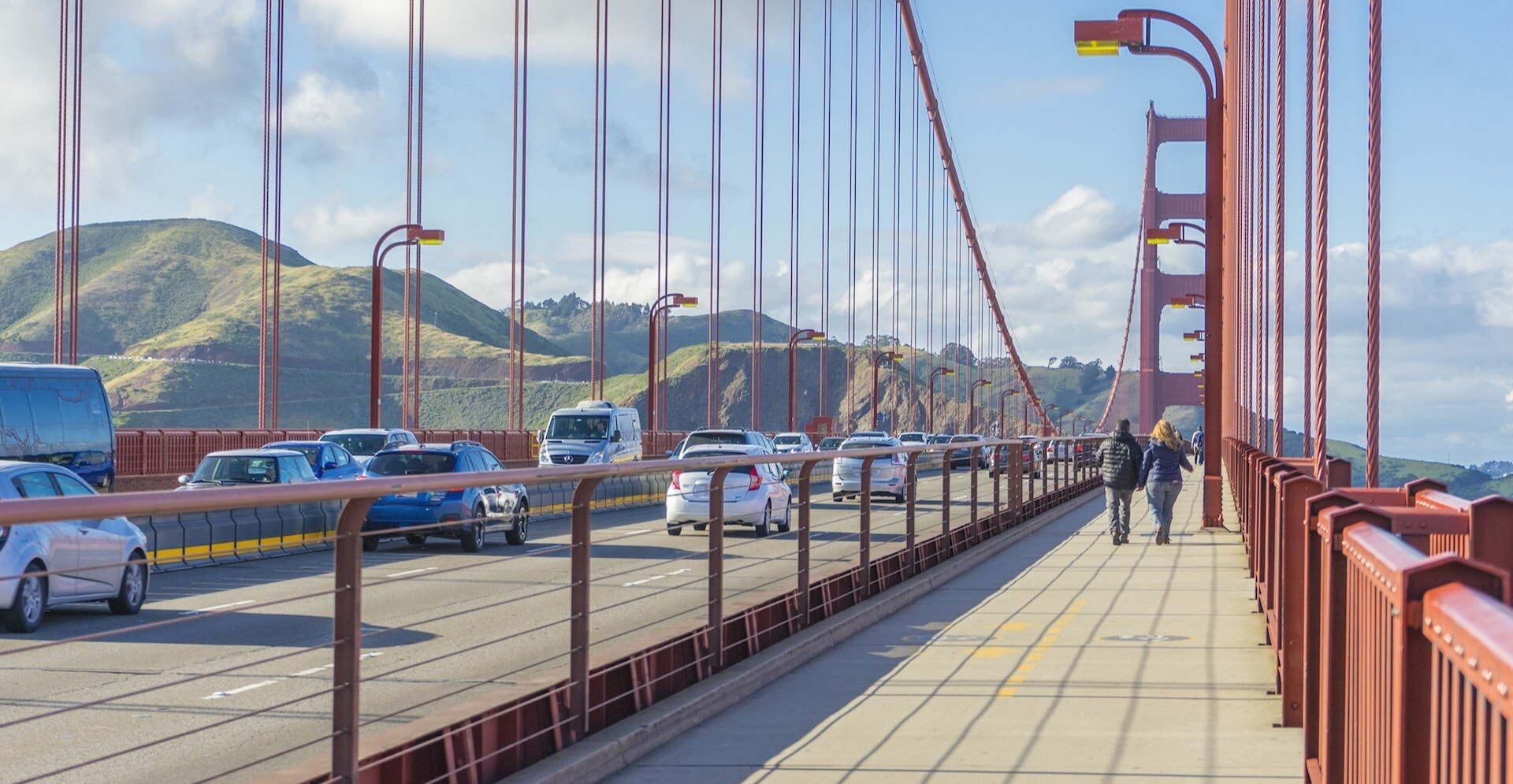Much like Arcadis’ interactive Future Mobility experience, San Francisco’s mobility goals center on people. In broad terms, the city aims to provide travelers with the greenest, most affordable trip choice in two minutes and allow them to easily get anywhere in the city within 20 minutes.
For a city that experiences a million car trips each day, this goal might seem lofty. But San Francisco holds a rare advantage: Proximity to Silicon Valley’s most advanced mobility solution providers.
I can hardly imagine mobility without ridehailing. But before Uber (and subsequent companies like Lyft) flooded city streets worldwide, the first rides took off right here at the SF App Show in 2010.
As firms debuted cutting edge solutions, the city got an early start on lessons learned and best practices for Smart Mobility. The proximity is not a perk enjoyed passively, though. The city actively leveraged – and continues to maximize – the deep well of resources to enhance mobility.
Projects like the embrace the assortment of transportation network companies and connected and autonomous vehicle (CAV) projects by giving them free reign to use the city’s streets as an interactive testing ground. Future Mobility
Fifty businesses are licensed in California to test CAV technology, with many in the Bay Area. Commitments to working with those providers, as well as leading researchers such as UC Berkley’s ITS teams and MIT’s Media Lab, turns what could be a collection of siloed pilots into an evolving learning environment.
Collaboration helps the city quickly shape regulations and implement solutions that enhance Smart Mobility’s potential for citizens. Data sharing describes not only how a particular mode fares, it highlights how all modes can interact to create seamless, stress-free and environmentally friendly journeys.
Revealing smart mobility pitfalls
While San Francisco’s proximity to Silicon Valley has reaped many benefits, I would be remiss to not acknowledge that the influx of Lyft and Uber vehicles has added to already overcrowded roadways. Uber and Lyft jointly commissioned research on the traffic effects of their services, and the study found that in a one-month period in San Francisco, 12-14 percent of all vehicle miles traveled were generated by Lyft and Uber services.
Another study found that the presence of rideshare companies can have a negative effect on public transit usage, noting, “In a market like San Francisco … we would expect a 12.7 percent decrease in bus ridership, all else being equal.”
Still, gathering data around these challenges will be crucial in solving them. It allows city and industry leaders to advance conversations around growing challenges like first- and last-mile mobility using real-world insights. For their part, Uber and Lyft are both working to minimize the number of vehicles on the street by reducing the need for personal car ownership, implementing congestion pricing, and increasing ridership in pooling services.
Don’t copy San Francisco’s plan, embody its spirit
San Francisco sits in an enviable position. But cities don’t need a Tesla, Uber or Bird headquarters in their backyards to explore how their modes can enhance citizen journeys. Applying San Francisco’s ethos to their Smart Mobility approaches can enrich plans and expedite progress toward future mobility.
Besides, a copy and paste approach to San Francisco’s mobility plans won’t work for everyone. The city’s pilot projects analyze and address its unique mobility needs. For cities looking to replicate San Francisco’s Smart Mobility advances, the principles of public-private collaboration, data collection, learning and improving through pilot projects are what matter the most.








